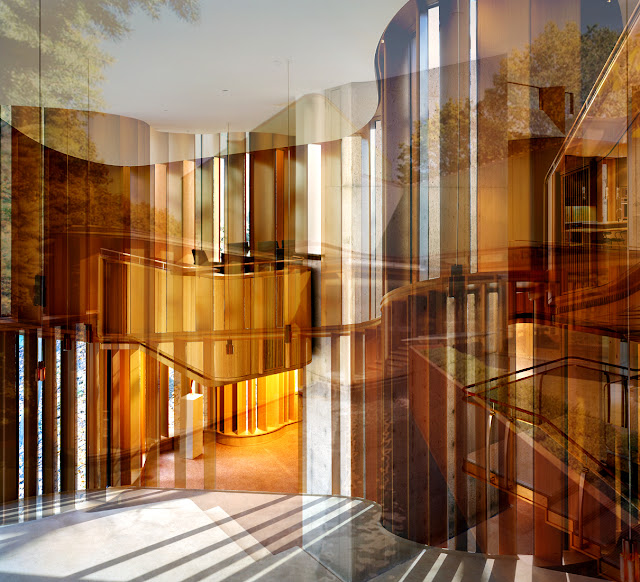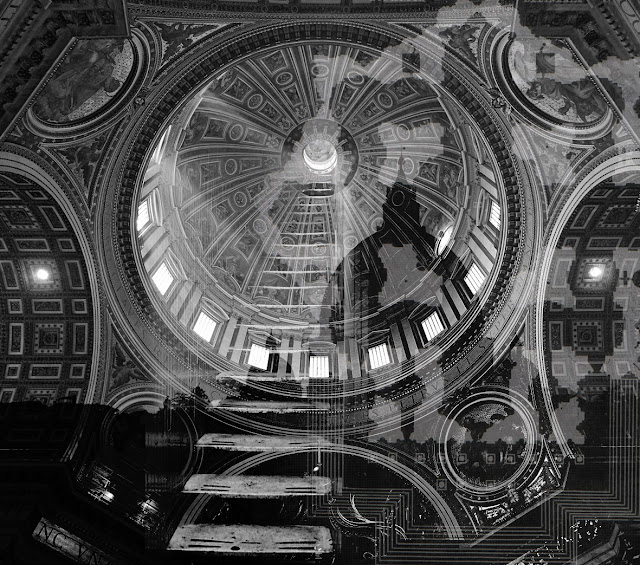Design Methodologies
The idea that architecture could be simply that was a new concept brought to my attention earlier this semester. Architectural examples often symbolize something outside of themselves and it is this referential aspect that somehow gave it meaning and validation. Is there a need for symbolism in architecture? Does architecture need to stand for, refer to, or represent something outside of itself? Does this usage of symbolism make it Architecture?
Local
How can architecture be symbolic or representational in regard to its surroundings? Some may call this "regional" architecture, but for me its a symbolic representation of the place in which a building stands or inhabits.
Brigitte Shim, the distinguished guests for CriticalMASS this year embodies this symbolism I speak of in her work. She is conscientious of local materials, culture, and traditions and tries to incorporate them into her projects such as the Integral House. Alvar Aalto does this in much of his architecture as well - in particular, Villa Mairea, Saynatsalo Town Hall, Muuratsalo Experimental House, and Jyvaskyla University. Alvaro Siza shows this in many of his projects too - The Tea House and Leca Swimming Pools as well as the Galician Center for Contemporary Art.
Brigitte Shim, the distinguished guests for CriticalMASS this year embodies this symbolism I speak of in her work. She is conscientious of local materials, culture, and traditions and tries to incorporate them into her projects such as the Integral House. Alvar Aalto does this in much of his architecture as well - in particular, Villa Mairea, Saynatsalo Town Hall, Muuratsalo Experimental House, and Jyvaskyla University. Alvaro Siza shows this in many of his projects too - The Tea House and Leca Swimming Pools as well as the Galician Center for Contemporary Art.
 |
| Villa Mairea --- Muuratsalo Experimental House --- Galician Center for Contemporary Art |
Function
Can symbolism present itself through function?
The Pompidou Center, but Piano and Rogers in Paris came to mind immediately.
"Their concept, depicted in one of their competition drawings as a collage, was portraying the museum itself as movement. The other concept in their design, and perhaps the most obvious, was exposing all of the infrastructure of the building. The skeleton itself engulfs the building from its exterior, showing all of the different mechanical and structure systems not only so that they could be understood but also to maximize the interior space without interruptions." - ArchDaily.com
I found it particularly interesting to discover their usage of collage for the design submission.
So function can be portrayed through symbolic representation. The center was designed to embody movement and freedom - both with strong political affiliations.
The second example that came to mind was Saarinen's TWA Terminal. The function of the building is clearly represented on the exterior.
Investigating functional symbolism also brought to mind national and political symbolism.
The Pompidou Center, but Piano and Rogers in Paris came to mind immediately.
"Their concept, depicted in one of their competition drawings as a collage, was portraying the museum itself as movement. The other concept in their design, and perhaps the most obvious, was exposing all of the infrastructure of the building. The skeleton itself engulfs the building from its exterior, showing all of the different mechanical and structure systems not only so that they could be understood but also to maximize the interior space without interruptions." - ArchDaily.com
I found it particularly interesting to discover their usage of collage for the design submission.
So function can be portrayed through symbolic representation. The center was designed to embody movement and freedom - both with strong political affiliations.
The second example that came to mind was Saarinen's TWA Terminal. The function of the building is clearly represented on the exterior.
Investigating functional symbolism also brought to mind national and political symbolism.
Formal Symbolism
Formal symbolism is more common than I had first realized. There are countless examples of building forms that stand as representation for something other than the building - often something of relation to the buildings purpose. Does the Seafarer's Center need to be in the shape of the fish? Could it be an effective piece of architecture if were simply a box? Is the shape conducive to the functional aspects of the building?
Geometric Symbolism
Geometric symbolism seemed to be prevalent in particular architects' work. Mies van der Rohe, Frank Lloyd Wright, Andrea Palladio, Tadao Ando, all exhibit particular attention to geometries in their architecture. This appears as a form of symbolism - but it spans more than just form. So I find myself questioning what exactly are these architects representing through their employment of strict geometries?
Sacred Symbolism
Symbolism is at the core of sacred architecture. I began my exploration here since it seemed an easy point of entry. Looking at both old and new architecture, it seems that symbolism is the unifying thread over time. Both old St. Peter's and the more recent Santa Maria use symbols and varying methods of representation in order to refer to something outside of themselves.
Can architecture just be architecture?
The idea that architecture could be simply that was a new concept brought to my attention earlier this semester. It seems previously that architecture always stood for something larger or greater. Architectural examples often symbolized something outside of themselves, this referential aspect of architecture somehow gave it meaning. Is there a need for symbolism in architecture? Does architecture need to stand for, refer to, or represent something outside of itself?
Subscribe to:
Comments (Atom)













